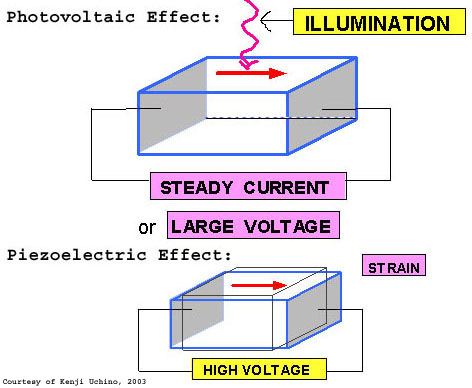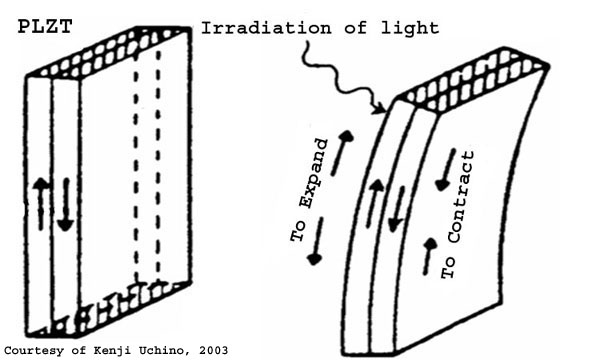Just What Is Photostriction?
The basic definition of photostriction is the generation of strain by irradiation of light. The theory of photostriction can be described in more detail as the combination of the photovoltaic and the piezoelectric effects. The photovoltaic effect is that of light turning into electricity. The piezoelectric effect is that of electricity turning into mechanical motion. In a sense, the photostrictive effect is that of light turning directly into mechanical motion.
Photostriction can be observed in ceramics. One ceramic that has been shown to produce the photostrictive effect is PLZT. PLZT is a ceramic made of Lead, Lanthanum, Zirconium, and Titanium.
Two other materials that photostriction can be observed in are called PMN-PT doped with Tungsten and PZN-PT. Unlike PLZT, which is an artificial ceramic made in the lab, PMN-PT doped with Tungsten and PZN-PT are crystals that are literally grown with the correct properties.

This is an example of the photovoltaic effect and the piezoelectric effect. The yellow boxes are what is done to the sample and the purple boxes are the results.

This is an example of what the strain may look like in PLZT
